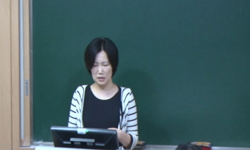C3 glomerulonephritis (C3GN) is a recently described entity that shows a glomerulonephritis on light microscopy, bright C3 staining and the absence of C1q, C4, and immunoglobulins on immunofluorescence microscopy and mesangial and/or subendothelial el...
http://chineseinput.net/에서 pinyin(병음)방식으로 중국어를 변환할 수 있습니다.
변환된 중국어를 복사하여 사용하시면 됩니다.
- 中文 을 입력하시려면 zhongwen을 입력하시고 space를누르시면됩니다.
- 北京 을 입력하시려면 beijing을 입력하시고 space를 누르시면 됩니다.
https://www.riss.kr/link?id=A101470761
-
저자
김용진 (영남의대) ; Kim, Yong-Jin
- 발행기관
- 학술지명
- 권호사항
-
발행연도
2013
-
작성언어
Korean
- 주제어
-
등재정보
KCI등재후보
-
자료형태
학술저널
- 발행기관 URL
-
수록면
1-5(5쪽)
-
KCI 피인용횟수
0
- DOI식별코드
- 제공처
-
0
상세조회 -
0
다운로드
부가정보
다국어 초록 (Multilingual Abstract)
C3 glomerulonephritis (C3GN) is a recently described entity that shows a glomerulonephritis on light microscopy, bright C3 staining and the absence of C1q, C4, and immunoglobulins on immunofluorescence microscopy and mesangial and/or subendothelial electron-dense deposits on electron microscopy. The term 'C3 glomerulopathy' is often used to include C3GN and dense deposit disease (DDD), CFHR5 nephropathy, those of which result from dysregulation of the alternative pathway of complement. C3GN shares some aspects of atypical hemolytic uremic syndrome, MPGN, late stage of post infectious glomerulonephritis and other glomerulonephrtis. When C3GN is considered, measurement of serum complement proteins including C3, CFH, CFI, CFB and testing for the presence of C3 nephritic factor, anti-factor H autoantibodies are necessary. To screening for mutations, genes that encode complement regulators should be evaluated. This disorder equally affected all ages, both genders, and typically presented with hematuria and proteinuria. In both the short and long term, renal function remained stable in the majority of patients.
참고문헌 (Reference)
1 de Córdoba SR, "Translational mini-review series on complement factor H: genetics and disease associations of human complement factor H" 151 : 1-13, 2008
2 Pickering MC, "Spontaneous hemolytic uremic syndrome triggered by complement factor H lacking surface recognition domains" 204 : 1249-1256, 2007
3 Sethi S, "Proliferative glomerulonephritis secondary to dysfunction of the alternative pathway of complement" 6 : 1009-1017, 2011
4 Servais A, "Primary glomerulonephritis with isolated C3 deposits: a new entity which shares common genetic risk factors with haemolytic uraemic syndrome" 44 : 193-199, 2007
5 Appel GB, "Membranoproliferative glomerulonephritis type II (dense deposit disease): an update" 16 : 1392-1403, 2005
6 Sethi S, "Membranoproliferative glomerulone-phritis-a new look at an old entity" 366 : 1119-1131, 2012
7 Sethi S, "Membranoproliferative glome- rulonephritis and C3 glomerulopathy: resolving the confusion" 81 : 434-441, 2012
8 Licht C, "Hereditary and acquired complement dysregulation in membranoproliferative glomerulonephritis" 101 : 271-278, 2009
9 Sethi S, "Glomeruli of dense deposit disease contain components of the alternative and terminal complement pathway" 75 : 952-960, 2009
10 Bomback AS, "Eculizumab for dense deposit disease and C3 glomerulonephritis" 7 : 748-756, 2012
1 de Córdoba SR, "Translational mini-review series on complement factor H: genetics and disease associations of human complement factor H" 151 : 1-13, 2008
2 Pickering MC, "Spontaneous hemolytic uremic syndrome triggered by complement factor H lacking surface recognition domains" 204 : 1249-1256, 2007
3 Sethi S, "Proliferative glomerulonephritis secondary to dysfunction of the alternative pathway of complement" 6 : 1009-1017, 2011
4 Servais A, "Primary glomerulonephritis with isolated C3 deposits: a new entity which shares common genetic risk factors with haemolytic uraemic syndrome" 44 : 193-199, 2007
5 Appel GB, "Membranoproliferative glomerulonephritis type II (dense deposit disease): an update" 16 : 1392-1403, 2005
6 Sethi S, "Membranoproliferative glomerulone-phritis-a new look at an old entity" 366 : 1119-1131, 2012
7 Sethi S, "Membranoproliferative glome- rulonephritis and C3 glomerulopathy: resolving the confusion" 81 : 434-441, 2012
8 Licht C, "Hereditary and acquired complement dysregulation in membranoproliferative glomerulonephritis" 101 : 271-278, 2009
9 Sethi S, "Glomeruli of dense deposit disease contain components of the alternative and terminal complement pathway" 75 : 952-960, 2009
10 Bomback AS, "Eculizumab for dense deposit disease and C3 glomerulonephritis" 7 : 748-756, 2012
11 Fakhouri F, "C3 glomerulopathy: a new classification" 6 : 494-499, 2010
12 Sethi S, "C3 glomerulonephritis: clinicopathological findings, complement abnormalities, glomerular proteomic profile, treatment, and follow-up" 82 : 465-473, 2012
13 Sethi S, "C3 glomerulonephritis: clinicopathological findings, complement abnormalities, glomerular proteomic profile, treatment, and follow-up" 82 : 465-473, 2012
14 Servais A, "Acquired and genetic complement abnormalities play a critical role in dense deposit disease and other C3 glomerulopathies" 82 : 454-464, 2012
동일학술지(권/호) 다른 논문
-
- 대한소아신장학회
- 설미영
- 2013
- KCI등재후보
-
- 대한소아신장학회
- 정현주
- 2013
- KCI등재후보
-
- 대한소아신장학회
- 김성헌
- 2013
- KCI등재후보
-
A Female Infant with Segmental Multicystic Dysplastic Kidney
- Korean Society of Pediatric Nephrology
- 이준호
- 2013
- KCI등재후보
분석정보
인용정보 인용지수 설명보기
학술지 이력
| 연월일 | 이력구분 | 이력상세 | 등재구분 |
|---|---|---|---|
| 2024 | 평가예정 | 계속평가 신청대상 (계속평가) | |
| 2022-01-01 | 평가 | 등재후보학술지 선정 (신규평가) |  |
| 2021-12-01 | 평가 | 등재후보 탈락 (계속평가) | |
| 2019-01-01 | 평가 | 등재후보학술지 선정 (신규평가) |  |
| 2018-12-01 | 평가 | 등재후보 탈락 (계속평가) | |
| 2017-12-01 | 평가 | 등재후보로 하락 (계속평가) |  |
| 2016-01-12 | 학술지명변경 | 한글명 : 대한소아신장학회지 -> Childhood Kidney Diseases외국어명 : Journal of the Korean Society of Pediatric Nephrology -> Childhood Kidney diseases |  |
| 2013-01-01 | 평가 | 등재 1차 FAIL (등재유지) |  |
| 2010-01-01 | 평가 | 등재학술지 선정 (등재후보2차) |  |
| 2009-01-01 | 평가 | 등재후보 1차 PASS (등재후보1차) |  |
| 2008-01-01 | 평가 | 신청제한 (등재후보1차) |  |
| 2007-01-01 | 평가 | 등재후보 1차 FAIL (등재후보2차) |  |
| 2006-01-01 | 평가 | 등재후보 1차 PASS (등재후보1차) |  |
| 2004-01-01 | 평가 | 등재후보학술지 선정 (신규평가) |  |
학술지 인용정보
| 기준연도 | WOS-KCI 통합IF(2년) | KCIF(2년) | KCIF(3년) |
|---|---|---|---|
| 2016 | 0.12 | 0.12 | 0.13 |
| KCIF(4년) | KCIF(5년) | 중심성지수(3년) | 즉시성지수 |
| 0.11 | 0.11 | 0.332 | 0 |





 ScienceON
ScienceON






